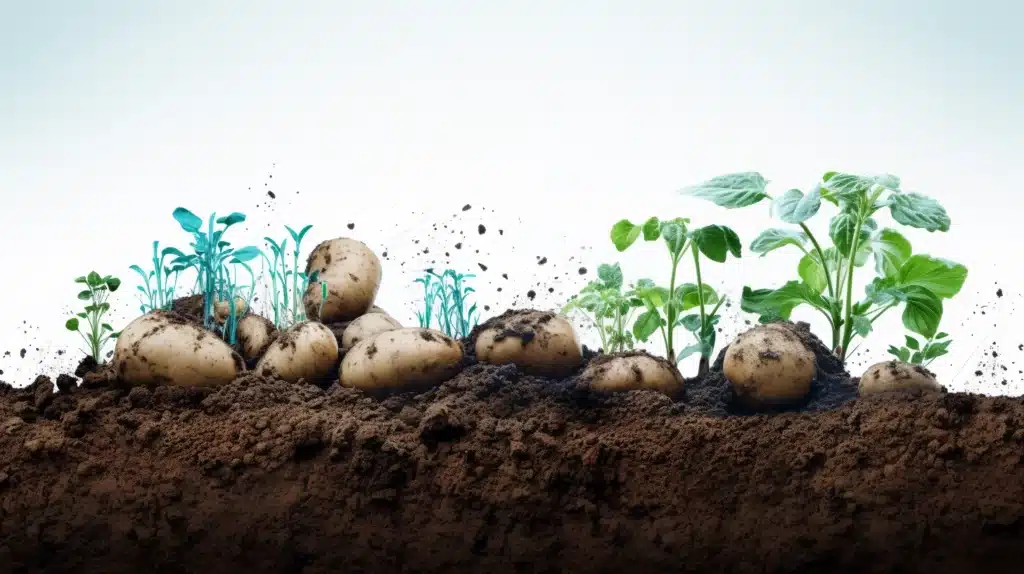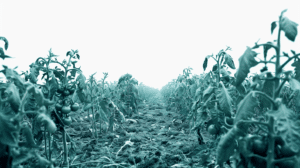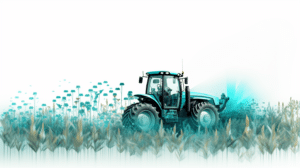How to Achieve Efficient and Sustainable Potato Growth?
Potato cultivation is of great importance globally, with potatoes being the third most important crop in the world and consumed regularly by 1.3 billion people worldwide. Due to their high nutritional density, yielding capacity, and adaptability to different conditions and needs, potatoes play a crucial role in global nutrition and the food and beverage industry. However, despite the promising conditions, potato cultivation is vulnerable to the destabilizing impacts of climate change.
Potatoes are a sensitive, demanding crop, requiring large amounts of water and nutrients, precise timing, and continuous care and protection, since tubers are sensitive to heat, cold, and sunlight. Cultivation soils need to be carefully selected and matched with seed variety. The above-ground growth must be destroyed at a specific time to encourage optimal tuber maturation and skin hardening, which also requires specific soil moisture and temperature. Considering all of the above, it’s not hard to understand why climate change is a major disruptor to potato cultivation.
Scientists project an overall 6% decrease in potato yields, yet this minor figure hides a volatile picture. The effects of climate change on potato cultivation wildly vary from region to region, meaning that while some areas will experience increases in yields, others will experience dramatic declines.
Other projections show yield increases due to elevated CO2 concentrations, canceled out by elevated temperatures and reduction in rainfall. Invading pests and emerging diseases also pose a growing threat, as warmer climate habitats change and expand. Warmer climates also shift phenology and the tuber development rate, creating unexpected timelines and disrupting established agronomic processes and workflows.
Droughts are of particular concern, as root crops like potatoes are water-demanding for long periods of time. This is troubling since some of the major producers of potatoes are located in cold regions like northern and eastern Europe and the united states, potatoes are grown over the summer, and in recent years have experienced devastating heatwaves and droughts.
Many of the above issues can be addressed by genetically resilient varieties – naturally repelling pests, immune to disease, and withstanding drought and heat. Leveraging these genetic traits to efficiently achieve high quality and yields require careful cultivation that is far from a one size fits all. Different potato varieties require different cultivation methods to unlock their potential and achieve optimal results.
Furthermore, potatoes are a resource and carbon-intensive crop, leading to high production costs and thin profit margins. In order to grow potatoes in an efficient and sustainable manner, it is essential for growers to optimize their input use in accordance with changing field conditions.
This complexity is compounded by post-pandemic workforce shortages. Potato cultivation requires skilled farm workers and an agronomic understanding that has become increasingly scarce. Scaling agronomic support in potato cultivation is therefore more important than ever.
The key to resilient, sustainable, and efficient potato cultivation
-
Data-driven input and activity decision support
Every variant requires slightly different cultivation practices to unlock its potential, yet the dynamic conditions in the field are just as important. By infusing growing protocols with real-time agronomic data, agronomists can provide highly granular advice to fit different varieties, grown in different regions, under specific weather conditions. In addition, embedding soil sampling and lab analysis into the larger data array can allow agronomists to tailor pre-season plot-level fertilization recommendations, at scale. Remote sensing data can help growers to precisely time hallum killing and harvest to optimize quality and yield, creating highly efficient production systems.
-
Scaling regenerative agriculture practices
Simultaneously, more and more major potato producers and food and beverage companies are pushing for the adoption of regenerative agriculture practices in potato cultivation. Minimal tilling – or avoiding overturning the earth with deep tilling machinery – is key in preserving the soil’s microbiome, structure and nutrient balance. Similarly, crop rotation helps the soil recover from the demanding potato crop and prevents soil erosion by creating a diverse web of root structures.
Regenerative agriculture practices in tubers can not only encourage soils to recover from the nutrient-depleting intensity of potato cultivation, but also minimize pesticide, fertilizer, and water use. Cover crops and biodiversity pockets have proven to naturally reduce pest prevalence and renew soil nutrients, and healthy, well-structured soils have demonstrated better water retention and permeability, making crops more resilient to both droughts and floods.
-
Scalable agronomic advice and task assignment
Advanced agronomic intelligence platforms, like Agritask, enable agronomists to remotely assign tasks and advise, providing valuable instruction to a less experienced or skilled workforce.
-
Developing and optimizing climate-adaptable varieties and best practices
The world is rapidly changing. The climate is volatile, leading towell-establishedequent and intense extreme weather events. As a result, the well established best practices are real-worldless and less relevant. Adapting to the changing climate requires real world evidence to rewrite the agronomic playbook. This cannot happen without collecting detailed agronomic data at scale.








